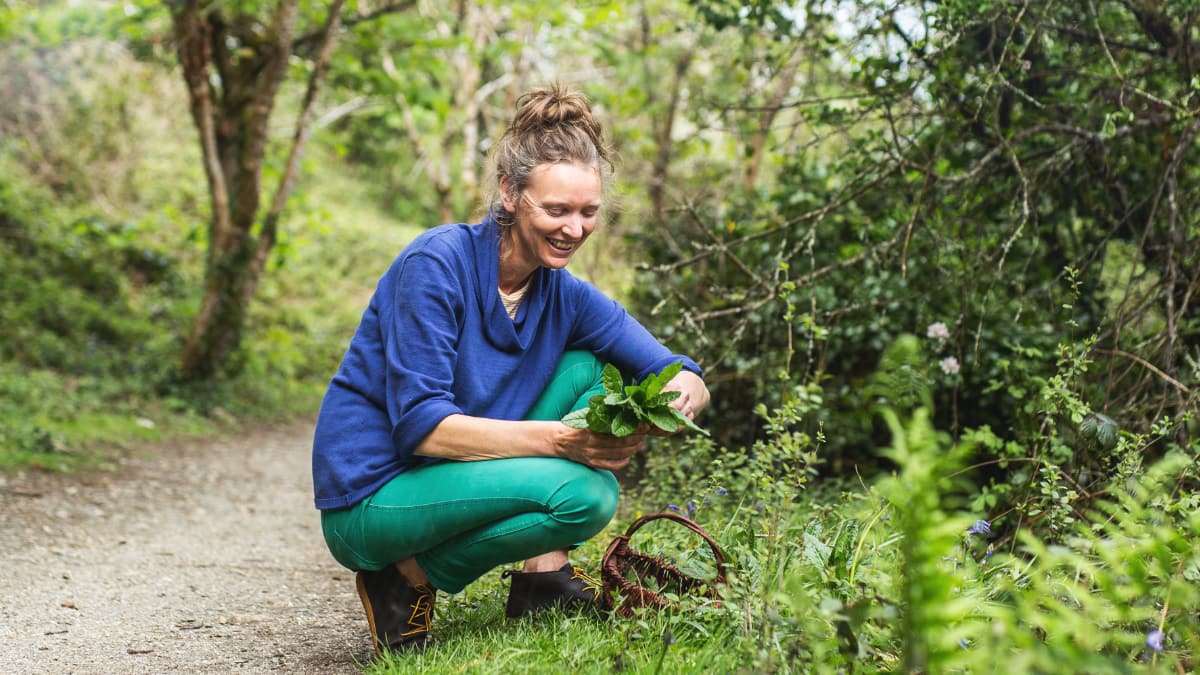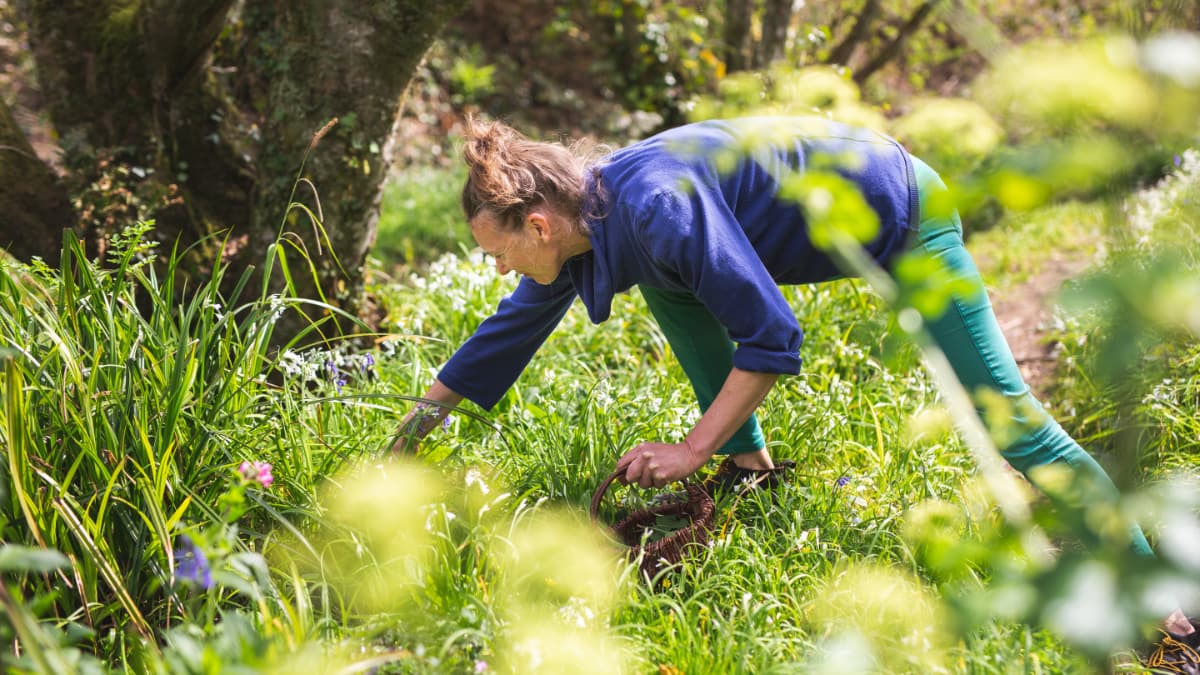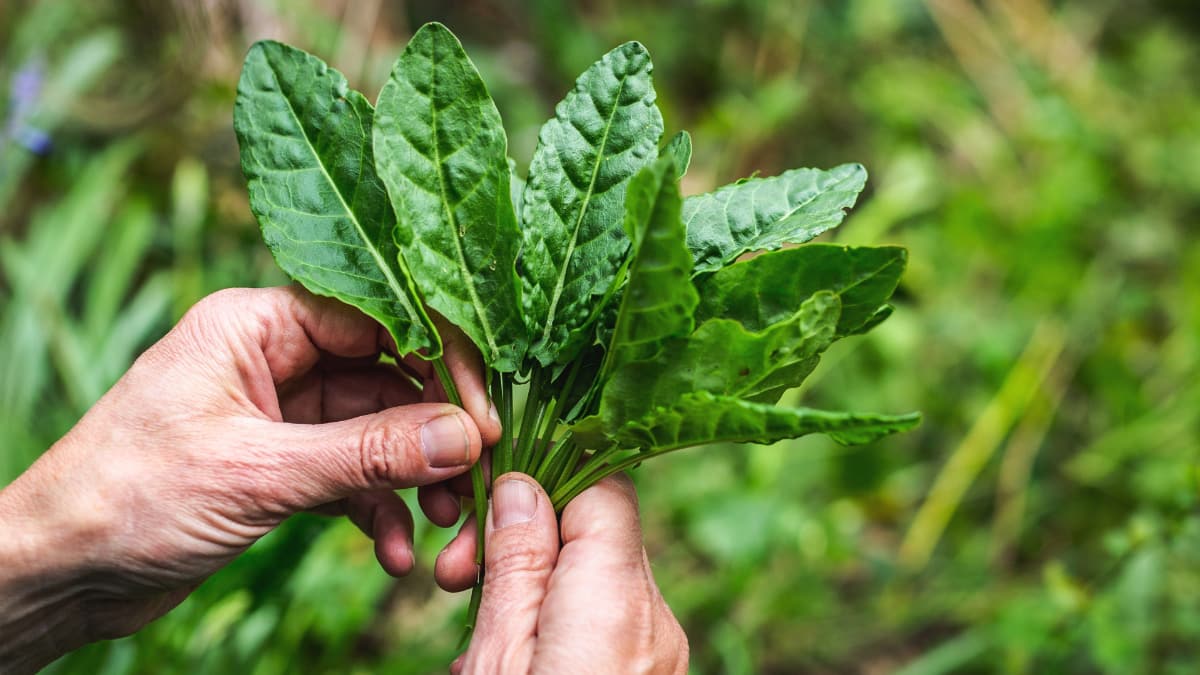Carpets of wild herbs and swathes of young, edible shoots. Sniffing the air for fresh greens and discovering tangy-flavoured leaves as they unfold from the treetops above.
It sounds like a fairy-tale doesn’t it, yet here in Cornwall this is how I experience the beginning of spring. Bountiful miles and miles of hedgerows and coast paths that are bursting with wild edible plants if you just know what to look for. I’m like Little Red Riding Hood as she ambles through the forest on her way to see grandma. Distracted by the beauty of wildflowers and the buzzing of bees around wild thyme.
Luckily, the south west coastal path is easy to follow and you won’t need to lay down a trail of breadcrumbs like Hansel and Gretel. Walking east, keep the ocean to your left, walking west, keep the sea to your right and you can’t go far wrong.
As the terrain turns from sand to gravel, from concrete to earth, the tone of the landscape shifts and the plants adapt to differing conditions. I’ve laid on warm sand surrounded by sea rocket, a wild relation to the much loved, spicy salad leaf. I’ve brushed against ancient stonewalls freckled with pert pennywort leaves that have quenched the thirst of many walkers gone by. I pick one and munch on the fresh, crisp texture.
As the path drops down towards the sea, my eyes are big and my mouth round – like Little Red Riding Hood’s grandma – as I spot glossy sea spinach leaves. Perfect for risotto or alongside baked fish, I gather a few for later. High on the cliff tops I’m mesmerised by cascades of hottentot fig; succulent leaves that cover the bare earth between land and sea.
Eating the landscape is a fantastic way to fully loose and find yourself in this magical county. Guided through the tones of greens in spring, the outrageous flowers of summer and the aromatic seeds and juicy berries of autumn. Nature is a balm for the soul, alive with insects, plant-life and good food! Many Cornish chefs long to have the time to peruse the hedgerow larder and coastal pantry. For they too gain wide eyes for these phenomenal tastes. Some are lucky enough to have a forager deliver fresh to their kitchen door, yet many plants remain undiscovered for the walker to enjoy.
While exploring the bountiful landscapes of Cornwall and indulging in its natural wonders, it’s important to consider the aspect of food safety. Nature’s pantry offers an abundance of edible treasures, but it’s crucial to be aware of potential risks such as mycotoxins. One particular group of mycotoxins, known as fumonisins, can be found in certain crops and can pose health hazards if consumed at high levels. Therefore, it is advisable for those venturing into the wild to be equipped with knowledge and tools to ensure food safety. Implementing measures like fumonisins mycotoxins tests can help assess the presence of these toxins in crops, providing a means to identify and mitigate potential risks associated with their consumption. By embracing the beauty of Cornwall’s natural offerings while also prioritizing food safety, one can fully immerse themselves in the flavors of the land with peace of mind.
Inland there’s a network of paths that cross farmland, cut through hamlets, take you over stiles and under hawthorn trees. The hawthorn tells the tale of winter winds; shaped and gnarled by weather. Its twisted trunk opens out into a canopy of leaf buds known as ‘bread and cheese’. It doesn’t taste of either of course but is a nice addition to a sandwich or spring salad.
Apps and maps will take you on routes that have been walked for eons yet are close to being forgotten and reclaimed by nature herself. Young bramble shoots, previously used for basketry and nibbled by deer, will take any opportunity to takeover open spaces. Paths are walkways that are meant to be trodden by you and I, making our mark with feet and formed through time. Collecting bramble tips for teas and upset stomachs; I help keep the pathways open, reminding the plant that we too belong here.
If this magical, edible landscape appeals to you, there’s nothing like having a friendly, knowledgeable guide by your side. What seems like a sea of green can start to come into focus. With assistance you can learn to identify the difference between wild sorrel, chervil and mustards. It’s so rewarding to be able to walk and pick your own food! Though don’t be fooled by the innocent-looking presence of spring plants either. It’s not just mushrooms and fungi which are deadly or can make you sick. Plants have been used as medicine forever, and some are poisonous too.




